Revealed on Wednesday 28 April.
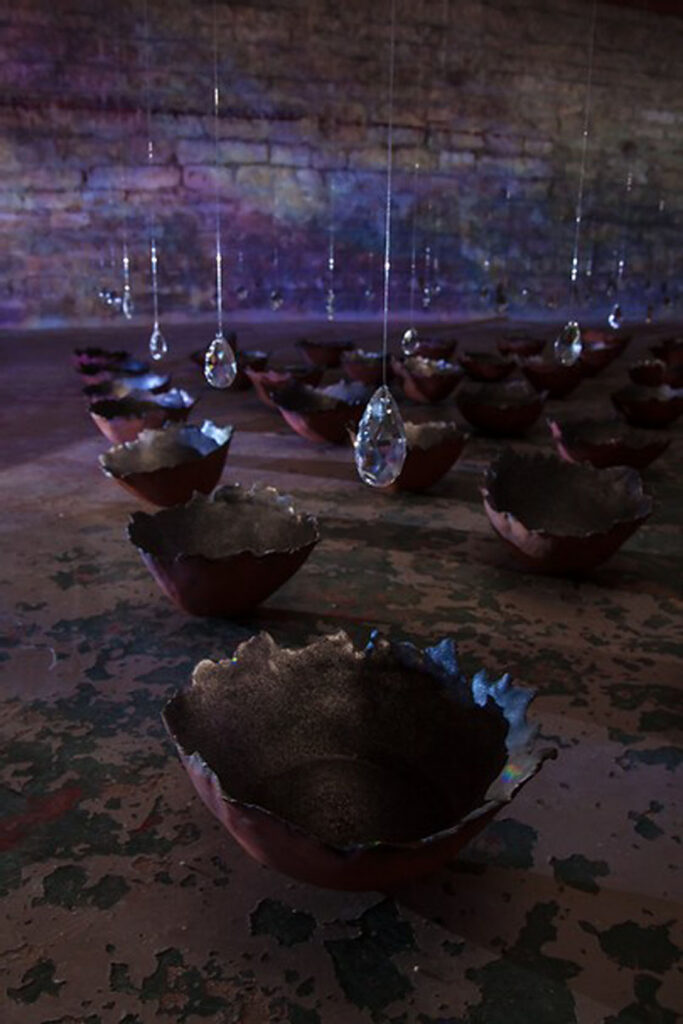
Shaeron Caton Rose works in printmaking and installation, which often contains a collaborative and conversational element. Her work explores the meta narratives that inform our society, looking at how meanings and generic beliefs relate to lived experience.
Un/seen Works
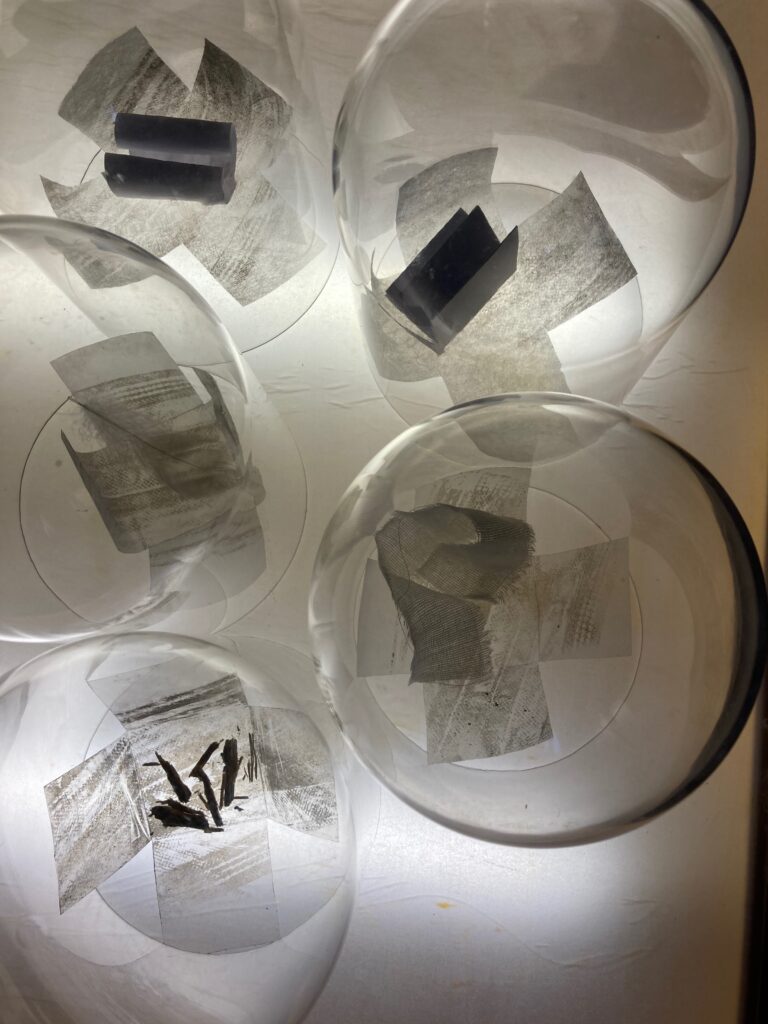
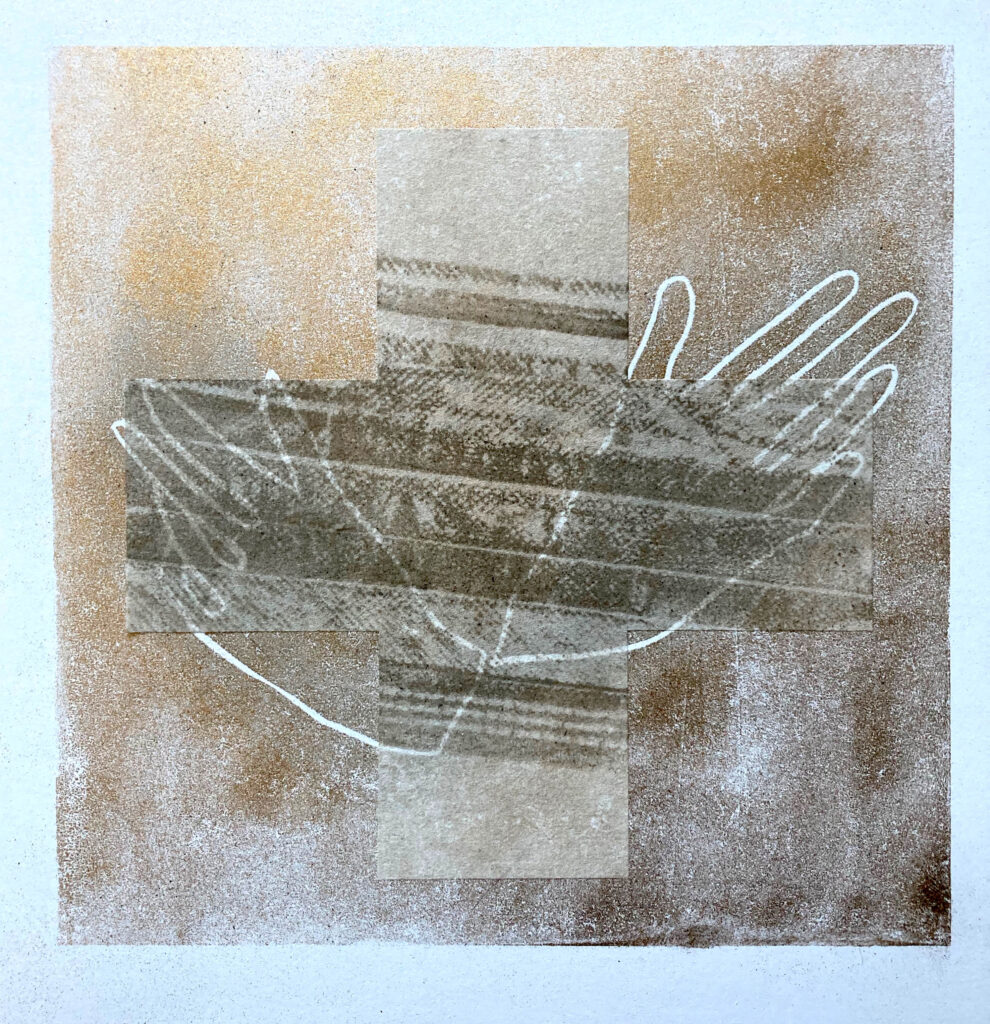
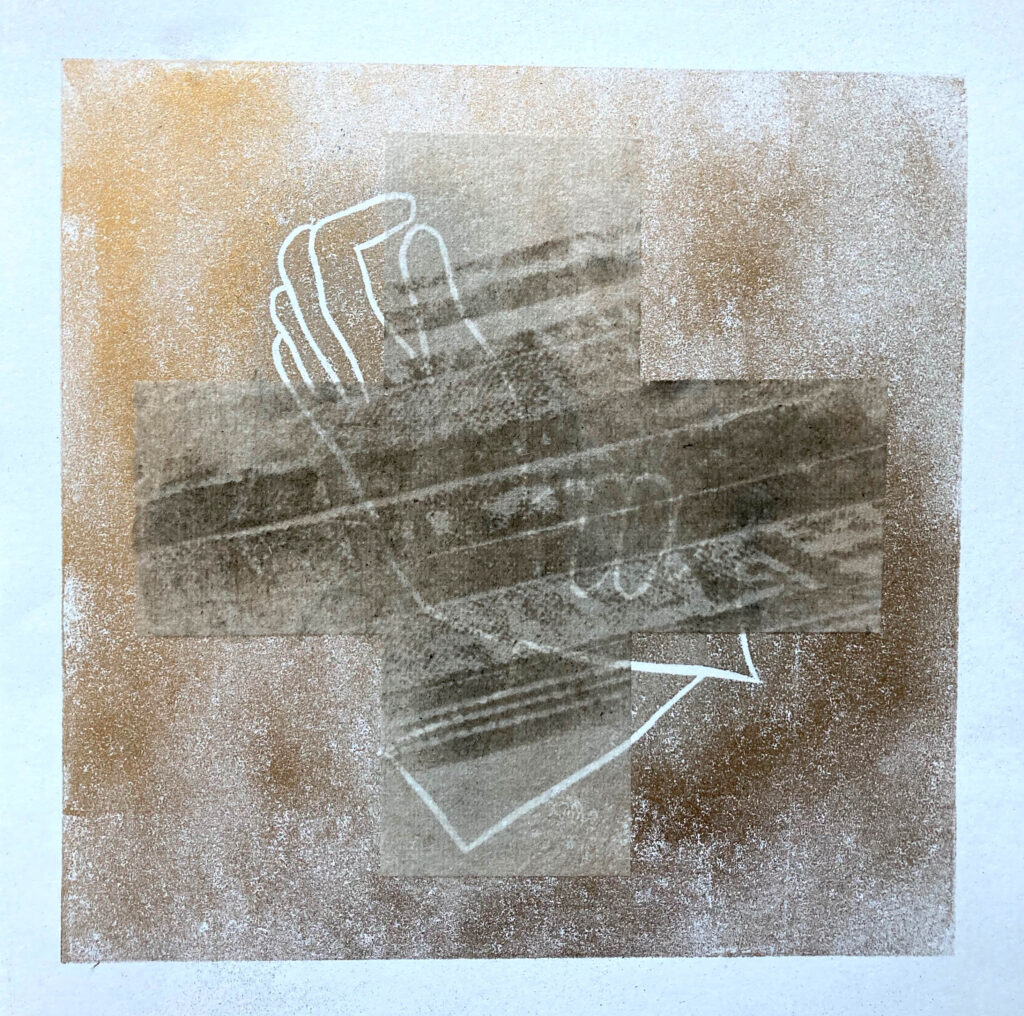
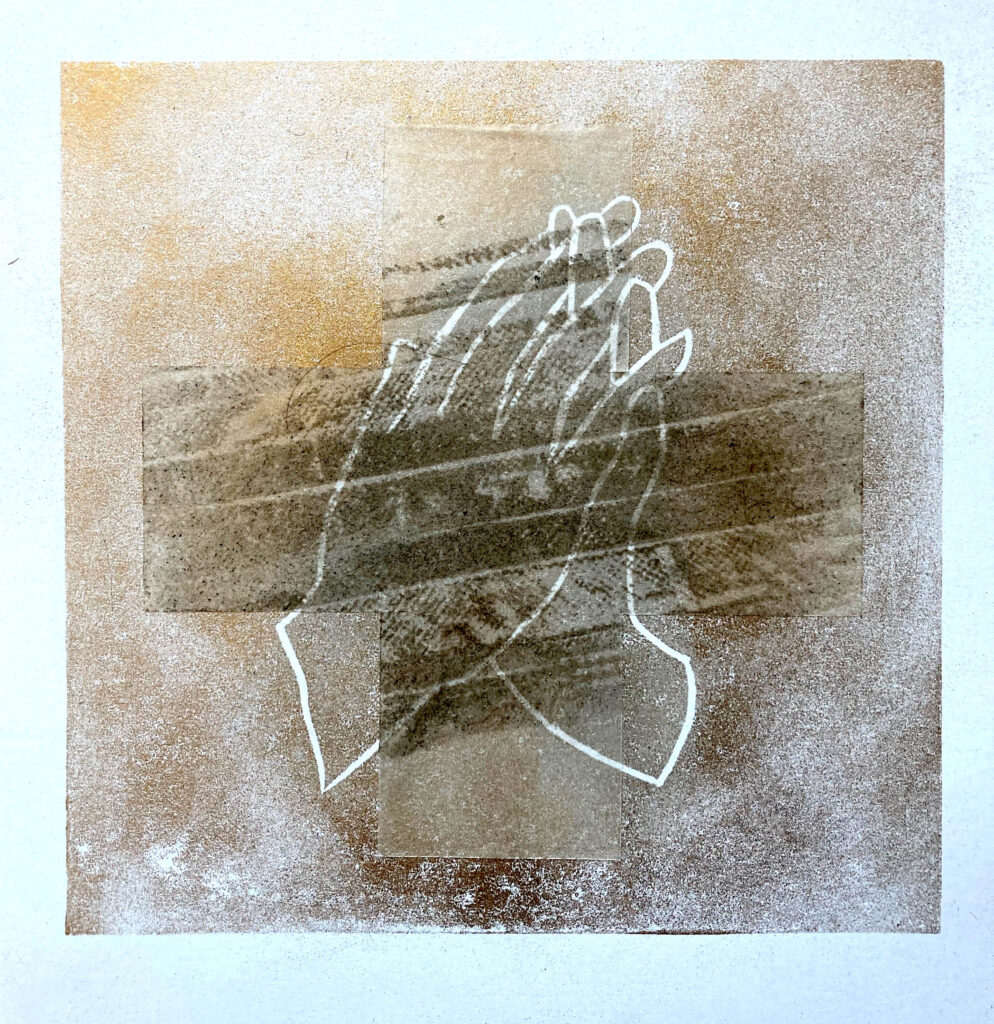
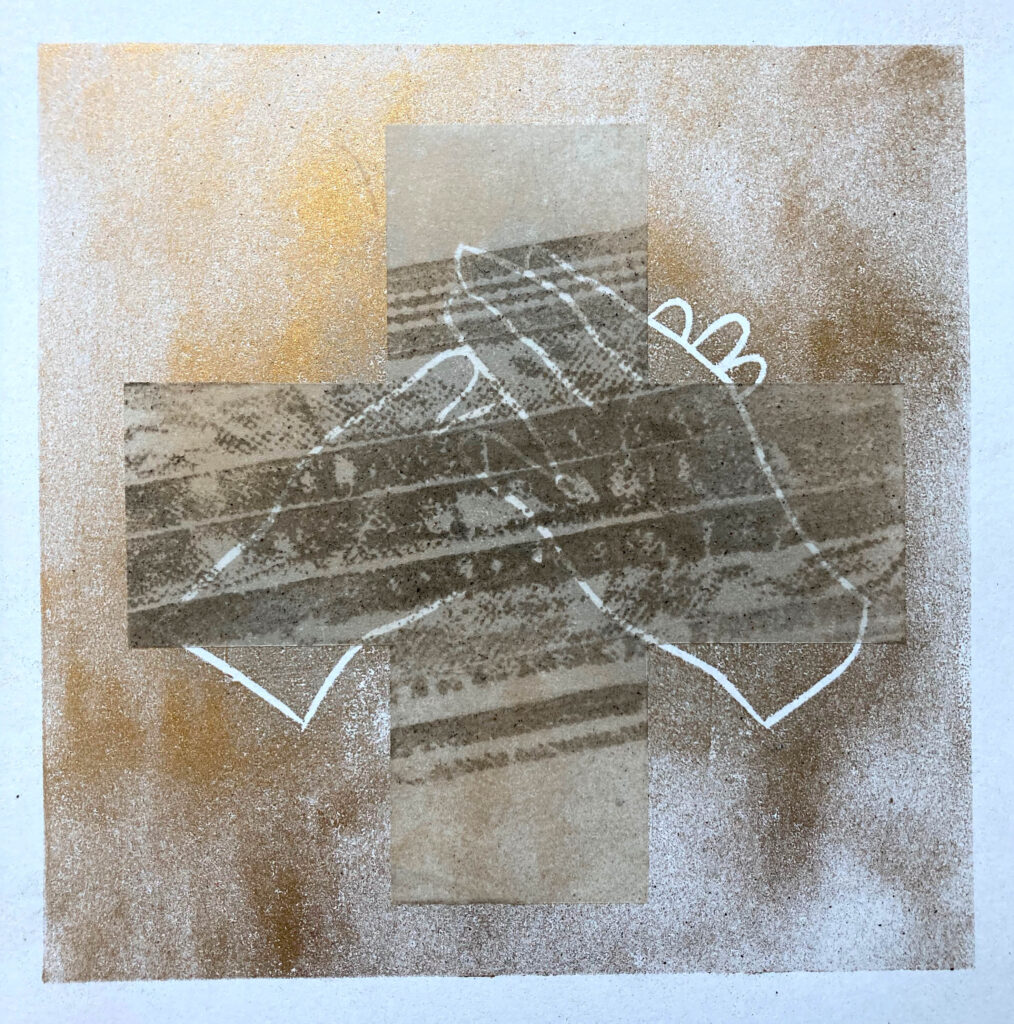
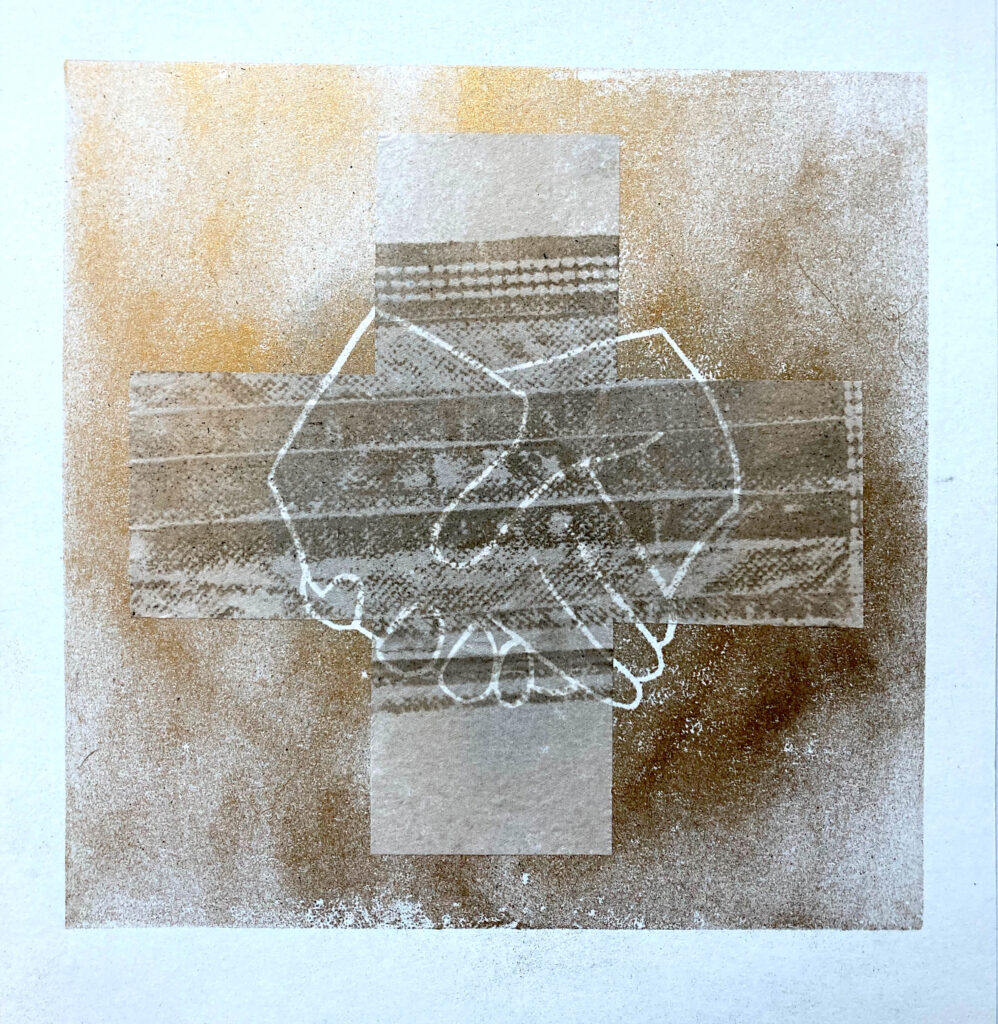
Venerate/Verify, or Touching Vision
In my original proposal for this project, I talked about the layers of meanings that can often change or obscure what we perceive as truth. I liked the process of this project, which somehow symbolised this for me, receiving a sound file and responding then passing it on rather like the game Telephone. I think this happens a lot in our society, through media and social media. In the end, the sound file I received took me on a slightly different journey, but maybe the ideas are related because the work I made is about how we comprehend the physical, conceptual and spiritual world.
The overriding title for this body of work is ‘venerate and verify’, I have been thinking about how a sense of awe, what we might call intuition or maybe wisdom, leads to an understanding about the world which is embedded in a visceral experience but is perhaps different to empirical or scientific knowledge. That relationship between the physical and the psychic perhaps. In his book Art + Faith, Makoto Fujimura says “our journey to ‘know’ God requires not just ideas and information, but actual making, to translate our ideas into real object and physical movements”
The sound piece I was sent was all about how breath and physical reality are enmeshed and talked about how objects in the BM are being damaged by the loss of human breath in the museum during lockdown. I have been thinking about how we experience the world through touch, and that, within the Christian tradition, the spiritual became physical in the incarnation. I also thought about how over the last year we have been removed from much of our ability to touch each other, and just how important touch is for us on many levels.
I thought about the scripture which says “We write to you about the Word of life, which has existed from the very beginning. We have heard it, and we have seen it with our eyes; yes, we have seen it, and our hands have touched it.” I was struck by another quote in the sound recording by artist Paul Nagu which talked about experiencing art and how eyes but also ‘hands will make you revere them’. The word venerate has a similar meaning to revere.
I saw on Instagram that the Thackeray Medical Museum was hosting an exhibition about eye surgery which used photographs of hands called ‘Touching Vision’, this became my inner working title.
I asked my friend who is a conservator and used to work for the BM about breath and humidity and she explained that the whole building acts as an envelope but also that actually most objects at the BM are available for handling by the public. I looked at conservation sites online to discover what sort of envelopes are used as a way of keeping objects, and started playing around with different envelopes, making them myself. The four-fold enclosure is a nice simple format to make but, what I also liked is that it looks like a cross when opened out. I had been thinking about the scripture text I was given on the sound recording which is about the word, or breath, or divine becoming flesh – so referencing the Nativity, so for me this was a reference to the other end of the Christ story which is as deeply physical as the Nativity.
I played around with different materials to make the enclosures to symbolise different types of layers between our preconceptions and the divine, each enclosure has a different level of transparency but all of them are transparent in one way or another. I then started thinking about how we have all been layering up over the last year, wearing masks and literally covering our breath. The masks have been used to protect ourselves and others, rather like the envelope and other devices like display domes, that museums and art galleries use. I have been printing masks already for another artwork and so tried this out onto the open enclosures, inking with transparent ink and ash. I like using ash because its subtle but also it symbolises the fragility and the visceral element of human existence.
I already had some display domes which I had recently acquired for another artwork and so started experimenting with putting the enclosures inside the domes and lighting them. They made great shadows, but I felt more was needed. The enclosures needed to hold something, like a museum exhibit, and the lighting needed movement. When thinking about what to put inside the enclosures, I thought about the story of the incarnation as the ultimate connection between breath and touch and so started looking at the Joyful Mysteries, which are 5 decades of the Rosary referring to the incarnation. I started looking at historical paintings of these themes to see if I could find objects in each painting that would need conservation if they were to exist in real life. I ended up with a book (annunciation), fabric (visitation), wood fragments (nativity), feather (presentation), scroll (discovery of Christ). These plus the envelopes, domes and video make the final installation.
I had already been thinking about making a video piece and an obvious start for me, especially as I work with disabled adults, was using sign language as it connects breath and physical touch. When I googled ‘breathe’ in sign language I found a music video by H.E.R about Black Lives Matter in which a rapper signs the whole song to camera which I found deeply moving. It occurred to me that most objects in the BM are there because of colonisation which still whispers today in the form of systemic racism. I asked a friend at work who helped me to film my hands signing ‘breathe’ and ‘we can’t breathe’ using green screen. I then filmed the installation using the ‘we can’t breathe’ video.
On reflection, I am unsure about having chosen to make the final video using the ‘we can’t breathe’ film rather than the ‘breathe’ film as perhaps it is a bit disingenuous of me to march right into an issue that isn’t my territory. I’m also aware that my hands which are in the video are, of course, white and this is something had I had more time I would have considered in the filming stage. But the two-week turn around didn’t really allow me the luxury – or necessity of finding a hand model and setting up a filming date.
When researching the Joyful Mysteries, I also got excited about the use of hands in the historical paintings as expressing touch as well as the emotive and maybe spiritual content of each image. I decided to make five prints based on these images. I copied hands from five famous paintings and made them into linocuts, made 5 more enclosures and mounted these on top of the lino prints. I stuck with using transparent ink and ash but also introduced gold powder to symbolise the divine, or maybe a sense of awe, and played with various meanings around where and how this was applied. I was thinking about how we touch the divine through the visceral, that human touch is so vital to our wellbeing and our understanding of the world we live in and that the constructs of religion and other institutions such as museums can often distance us from raw experience.
My choice of paintings to refer to was intentional, I wanted to find those in which Mary’s hand was always part of the central action. The pictures I worked from were: Annunciation: Fra Angelico, Visitation: Albertinelli, Nativity: Georges de la Tour, The Presentation in the Temple: Raphael, The Finding of the Saviour in the Temple: Holman Hunt.
I want to thank those who helped me at such short notice to make this piece: Douglas Black who filmed my video, Sherry Doyal for conservation knowledge and especially Fin Caton Rose who helped set up, rethink and film the installation.
Un/seen Piecemeal